Sick chimpanzees ‘self-medicate’ by eating plants with medicinal properties, research shows
Sick and injured chimpanzees self-medicate with medicinal plants, researchers have discovered.
Wild chimpanzees in Uganda have been filmed foraging for and eating plants with antibacterial and anti-inflammatory properties.
Laboratory tests showed that the vast majority of plants eaten by the animals inhibited bacterial growth, while a third reduced inflammation.
Researchers believe the remarkable primates deliberately seek out these plants as treatment when they are bad.
And looking at chimpanzees could have “huge implications” for the way we discover new drugs in the future.
Chimpanzees purposefully seek out and eat plants with medicinal properties when they are sick or injured, a study suggests
Lead researcher Dr Elodie Freymann from the University of Oxford told MailOnline: ‘The chimpanzees know the forest better than we do and can point us towards powerful compounds that could help us discover new medicines.’
Wild chimpanzees eat a wide range of plants, including some that have very low nutritional value but appear to contain medicinal substances.
Although researchers have long suspected that the monkeys may have been self-medicating, it has been extremely difficult to prove that their behavior was intentional.
To see whether chimpanzees often used plant-based medicines, Dr. Freymann and colleagues looked at a community of 51 chimpanzees in the Budongo Central Forest Reserve in Uganda.
During 116 days of observation, they monitored the chimpanzees’ health and carefully noted which plants they ate.
The researchers then collected samples from 13 plants that had either been eaten by sick chimpanzees or had previously been suggested to be used medicinally.
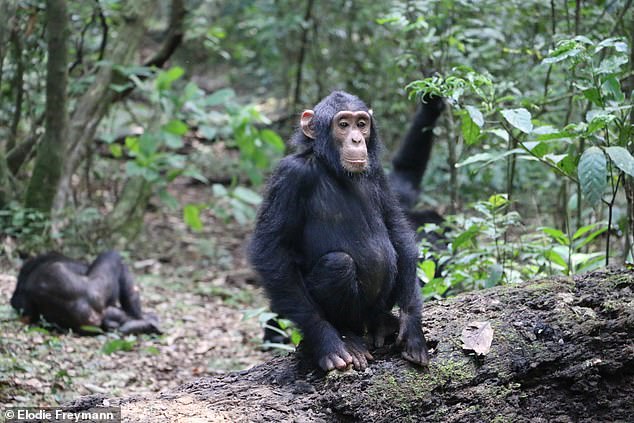
Researchers observed a community of 51 chimpanzees in Uganda’s Budongo Central Forest Reserve (pictured) to see which plants they would eat if they were sick
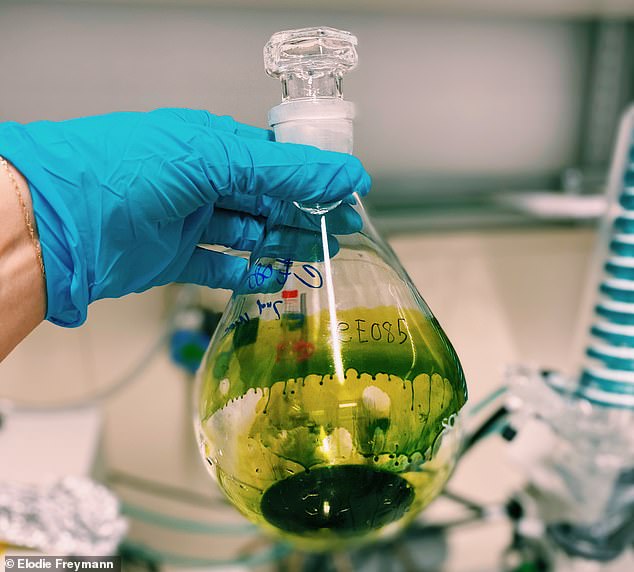
Researchers collected samples from 13 plants eaten by the chimpanzees (pictured) and found that 80 percent had antibacterial properties
When these plants were tested in a laboratory, scientists found that 80 percent inhibited bacterial growth, while a third had anti-inflammatory properties.
Dr. Freymann says: ‘To study self-medication in wild chimpanzees you have to act like a detective and gather multidisciplinary evidence to put together a case.
‘After spending months in the field collecting behavioral clues that led us to specific plant species, it was exciting to analyze the pharmacological results and discover that many of these plants showed high levels of bioactivity.’
In one case, scientists filmed a male chimpanzee with an injured hand traveling alone in search of ferns to eat.
Testing revealed that these ferns contained highly anti-inflammatory compounds that may have reduced pain and swelling.
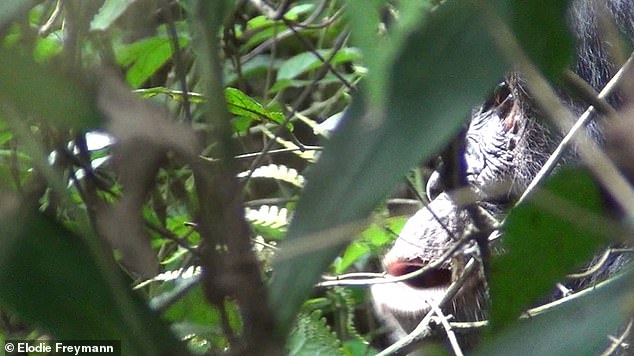
In one case, researchers watched a chimpanzee (pictured) find ferns to eat. They believe that these ferns could be intended to treat the chimpanzee’s injured hand
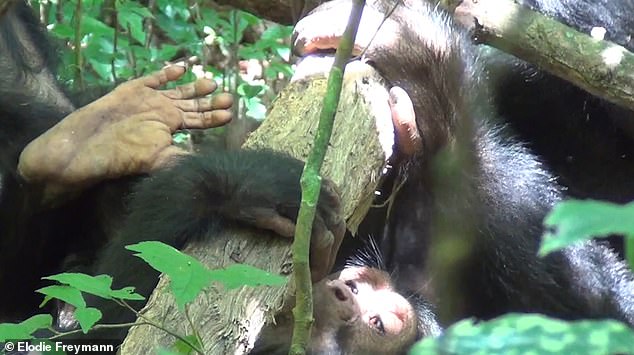
A young chimpanzee with a parasitic infection eats the bark of the catthorn tree, which is traditionally used to treat intestinal worms
In another case, the scientists watched as a young chimpanzee traveled far from the group to strip and eat the bark of the catthorn tree, which is traditionally used to treat intestinal worms.
Later analysis of the chimpanzee’s feces revealed that it had indeed contracted a serious parasitic infection when it visited the tree.
This suggests that chimpanzees do not accidentally eat these plants, but actively seek them out to treat illnesses and injuries.
However, the researchers behind the study say it is still an open question how the chimpanzees learned to eat these plants.
Dr. Freymann says: ‘Right now it seems that some of the more basic behaviors may be instinctive, but for the behaviors that require specific plant species in specific dosages, it seems hard to imagine that this might not be social in some way. has been learned.’
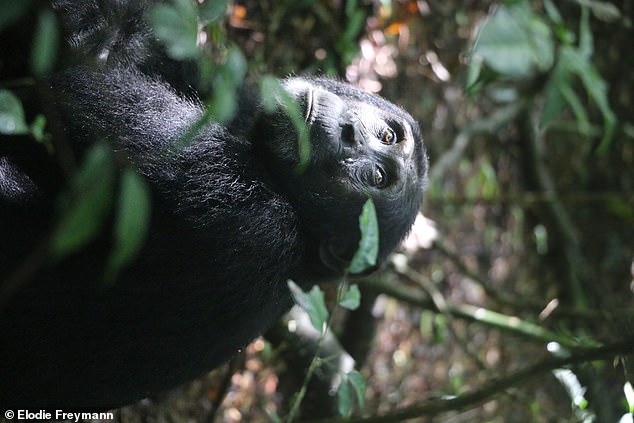
The researchers say it is not clear how the chimpanzees learn to eat the plants. However, they note that some of the more complex behavior is likely socially learned rather than instinctual
The researchers say one of the most exciting implications of this finding is how we can learn from chimpanzees to advance our own medical knowledge.
In their article, published in PLOS ONEthey point out that the increasing level of antimicrobial resistance creates a need for new medicines.
Plants that have not been tested before, such as those in the Bodongo Central Forest Reserve, may contain compounds that could form the basis for future medicines.
But instead of randomly testing plants, scientists were able to refine their search by looking at what sick chimpanzees chose to eat.
Along with bonobos, chimpanzees are humans’ closest living relatives, so an effective treatment for them could hold promise for us.
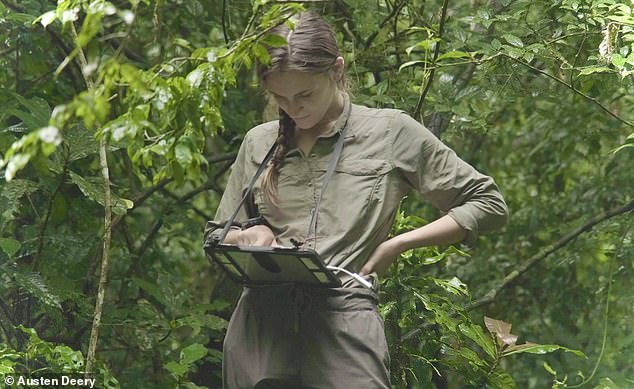
Dr. Elodie Freymann (pictured) says this discovery could have ‘huge implications’ for the future of how we discover drugs
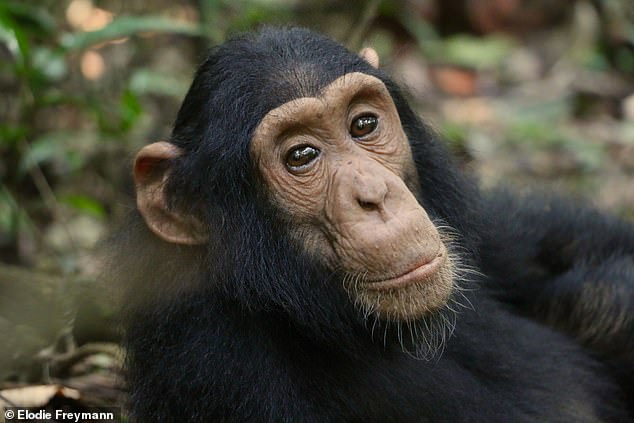
By carefully observing which plants are eaten by chimpanzees, scientists may be able to narrow their search for new medicinal compounds
Interestingly, eleven of the thirteen species the researchers tested were already known to have traditional medicinal uses in regions across Africa.
For example, the fruit of the sandpaper tree eaten by chimpanzees has also traditionally been used to treat wounds, hemorrhoids, venereal diseases, parasites and arthritis.
Dr. Freymann says: ‘Our study highlights the medicinal knowledge that can be gained from observing other species in the wild and underlines the urgent need to preserve these forest pharmacies for future generations.’
She adds: ‘To do this we need to protect the chimpanzees and these forests.’
Previously, another group of scientists in Indonesia observed an adult male orangutan applying medicinal plants to an open wound.
An orangutan named Rakus was seen chewing the leaves of the Akar Kuning vine into a pulp that he applied to a cut on his face.
But while scientists believe Rakus’ behavior was intentional, this was just one isolated case and not evidence of a behavioral trend.
